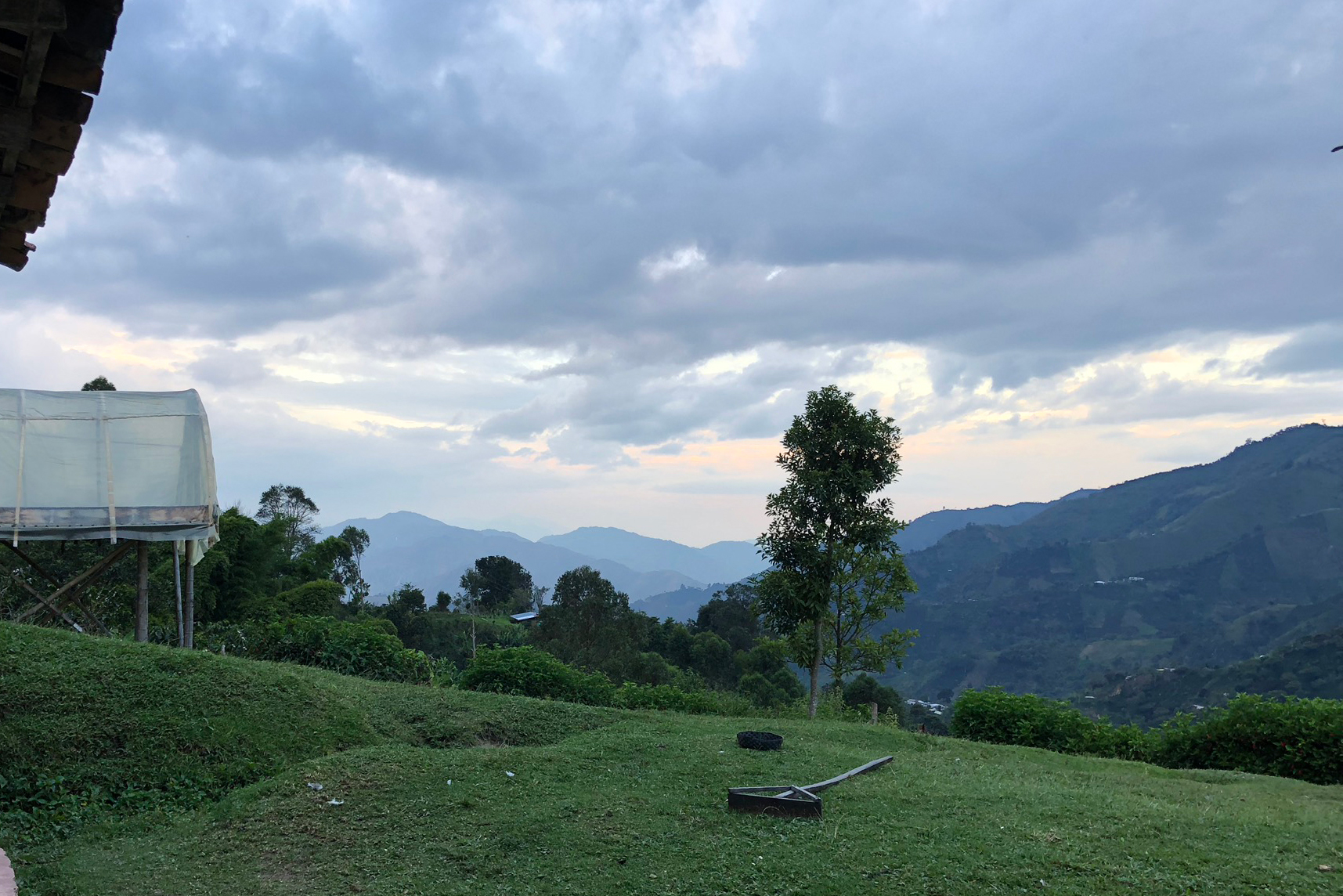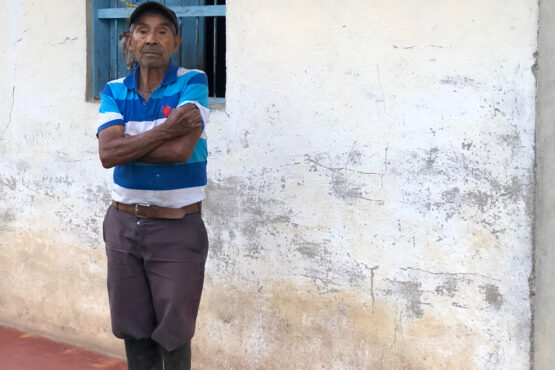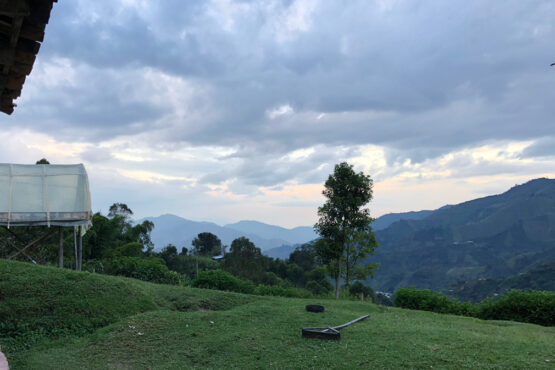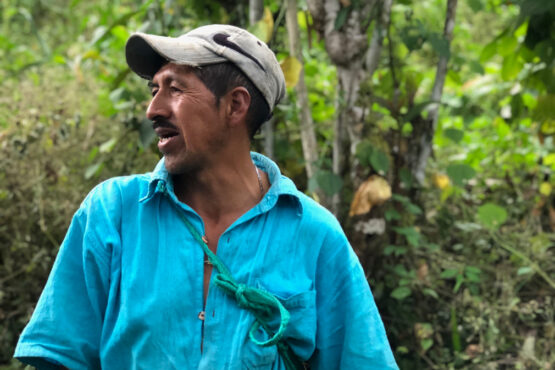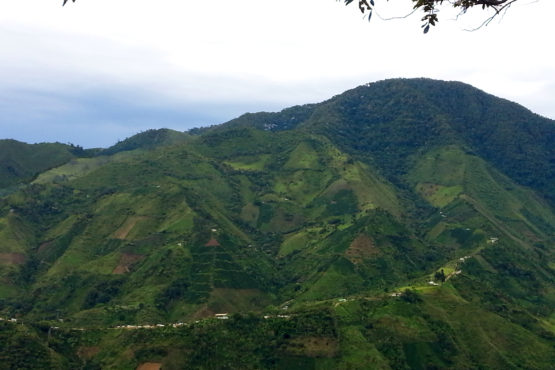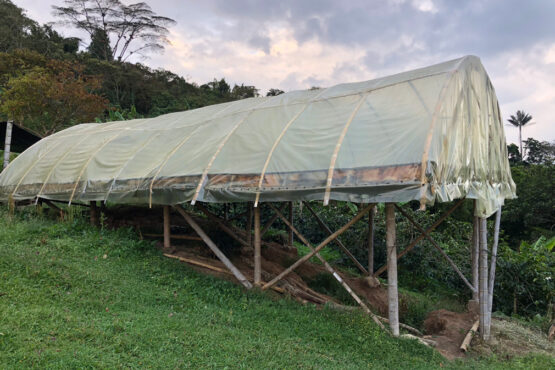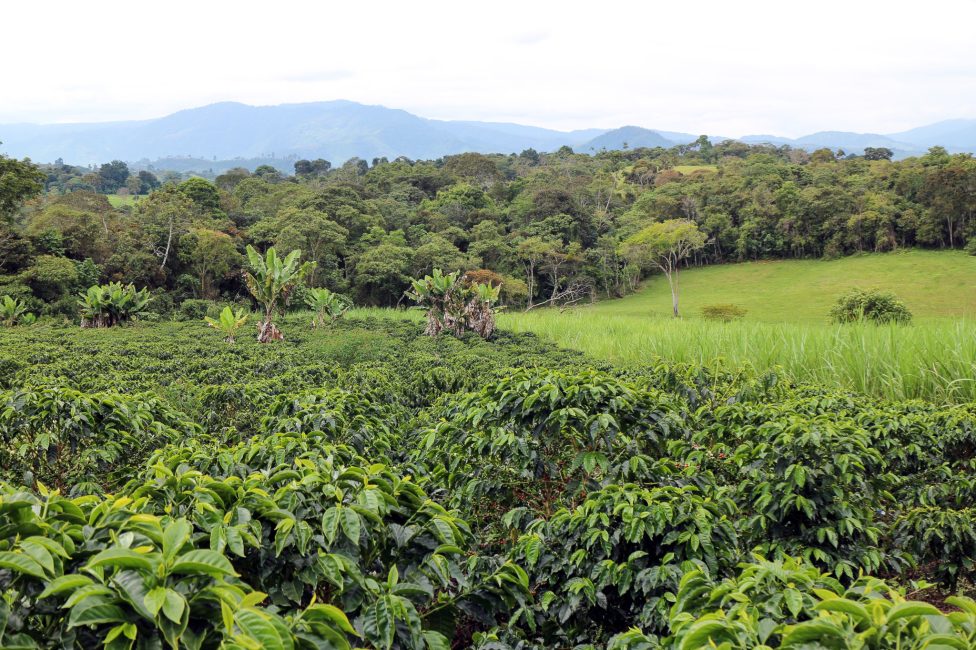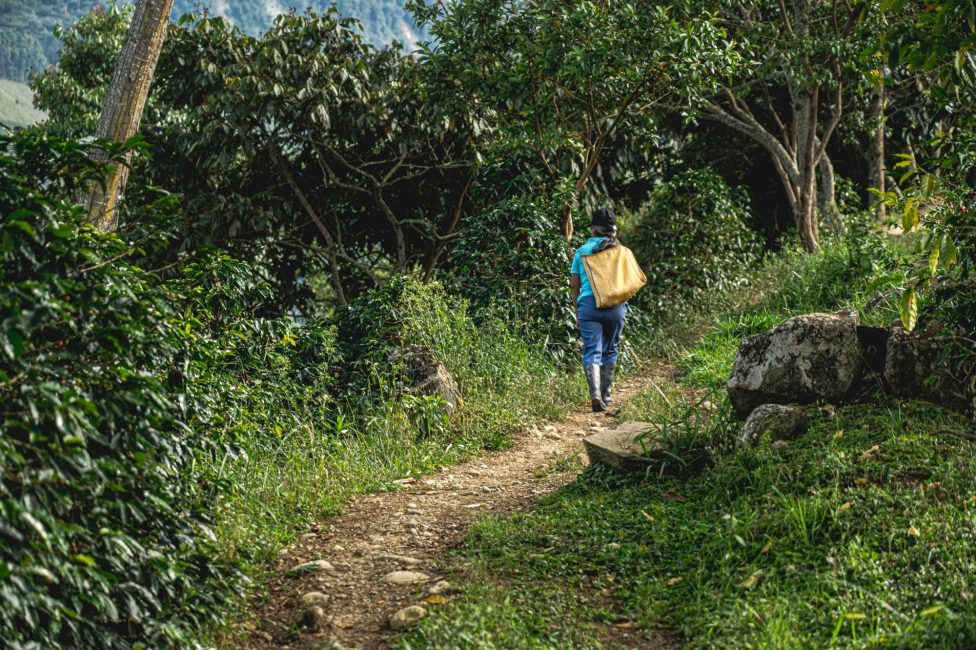El Cedro
Heavy and sweet, with maple syrup, caramelised orange and plum. Winey acidity and a lingering floral finish. Great intensity and clarity.
This micro-lot was produced by Don Francisco Cuchimba and Doña Marcelina, along with their son Rodrigo on their 2-hectare farm, El Cedro (meaning “the cedar tree” in Spanish), located near the small community of San Antonio, in the municipality of Inza, in Colombia’s Cauca state.
For Francisco, coffee is a family affair. The Cuchimba family has been growing coffee on their tiny and remote farm, El Cedro, for almost forty years, with multiple generations contributing to the farm’s management. El Cedro is situated at a staggeringly high elevation of 2,050 meters above sea level and just two hectares large, planted with the Caturra, San Bernardo and Colombia varieties. To access the farm, visitors must walk for over an hour on a steep mule track, which winds through grassy paddocks and swampland. This same track is used to transport the family’s dried coffee parchment to San Antonio once a fortnight during the harvest period.
ABOUT SAN ANTONIO
The town of San Antonio has breathtaking views of Colombia’s highest volcano, Nevado del Huila, which sits at the point where the states of Huila, Tolima and Cauca meet. The rich, volcanic soil of the area makes it ideal for agriculture and contributes to the excellent cup quality of coffees grown and processed here. Farms in the area tend to be small – on average just 1.5 hectares – and either has their own micro-beneficio (or wet mill) or share one with family or neighbours. Farmers grow a mixture of Caturra trees along with newer varieties Tabi and Colombia, which have proven more resistant to leaf rust. Cool overnight temperatures result in dense beans, which are notable for their sweetness and complexity. Lower temperatures and high rainfall also affect processing, making longer ferment and drying times necessary.
ABOUT INZA
The municipality of Inzá is located in the corner of the Department of Cauca, bordering with Tolima and Huila and looking out to the west over the Pacific Ocean. This region has excellent growing conditions for growing high-quality coffee, with high altitudes and rich volcanic soil. The plateau also has a very stable climate year-round, thanks to its proximity to the equator and the surrounding mountains, which protect the coffee against the humidity of the Pacific and the trade winds from the South. This region is an important source of water and wildlife, in addition to being prime coffee growing land.
Coffee from Cauca has historically been very difficult to access due to the region’s isolation and instability. For many years this part of Colombia was under the control of Colombia’s notorious rebel group, the FARC, and as a result, it was unsafe and violent. Since 2012, safe access to this region has been possible as a result of peace talks between the Colombian government and the rebels. Since this time some stunning coffees from small producers have become accessible.
HOW THIS COFFEE WAS SOURCED
The coffee was sourced by our export partners, Pergamino, who purchase coffee from small producers who have farms near San Antonio. Here, they work with the influential Pillimue family, who operate as their local logistical operators in San Antonio. The family has a longstanding presence in the area, having farmed coffee here across three generations. They also keep the town’s general store and have built an adjacent warehouse and QC lab, which acts as a receiving point for over 200 local producers who deliver coffee to them.
During the harvest, local farmers deliver small lots (around 100-150kg) of dried parchment to the Pillimue family’s warehouse and lab every 2-3 weeks. Upon delivery, a sample of the dried parchment is milled and assessed for physical attributes, including uniformity of size, presence of defects, moisture content and seed to hull ratio. If the coffee passes the physical assessment it is accepted and the farmer receives their first payment for the coffee, calculated by the weight delivered and a base rate related to the physical quality of the parchment.
Samples of the coffees are then cupped by a team trained by Pergamino and, if selected, sent to Pergamino’s QC lab in Medellin where they are further assessed by an expert team of cuppers. Each lot is carefully evaluated and, based on the cup score and profile, the coffee is sorted into different grades of quality and combined into exportable sized lots. Feedback on each lot is relayed back to the producer and after it has sold a second payment is made to the producer according to premium the coffee attracted.
Each season the team at Pergamino cups through hundreds of small lots from independent farmers, looking for coffees that exhibit excellent cup characteristics and showcase the region where they were produced. Francisco’s coffee was selected to be processed separately as a micro-lot for its distinct character and high cup quality.
Pergamino work with small producers in five different regions of Colombia; Cauca, Tolima, Nariño, Antioquia and Huila. Pergamino have actively been working to source and support coffee producers in regions where there is a high potential for quality, but that have historically not had access to specialty buyers. Through their Allied Producer program, they have done a lot to help promote commercialisation of specialty coffee throughout the regions they work in and to connect small producers to buyers who pay quality-based premiums, thereby improving the livelihood of the producing communities.
HOW THIS COFFEE WAS PROCESSED
This lot was selectively hand-harvested, with most labour being provided by Francisco and his family. During peak harvest the family hires local labourers to help harvest the coffee cherry, who are paid on per kilogram or on a daily rate when there isn’t much coffee to harvest.
The cherry was then processed using the washed method at El Cedro’s ‘micro-benficio’ (wet mill). The coffee was pulped using a small manual or electric pulper and then placed into a fermentation tank, where it was fermented for around 48 hours (depending on the weather and the farm’s location) and then washed using clean water from nearby rivers and streams.
The coffee was then carefully dried (over 10–18 days) on parabolic beds, which are constructed a bit like a ‘hoop house’ greenhouse, and act to protect the coffee from the rain and prevent condensation dripping back onto the drying beans. The greenhouses are constructed out of plastic sheets and have adjustable walls to help with airflow, and temperature control to ensure the coffee can dry slowly and evenly.
Once dry, the coffee was delivered to Pergamino’s warehouse, where it was cupped and graded, and then rested in parchment until it was ready for export.
Read more about our Colombian export partner, Pergamino, here.
